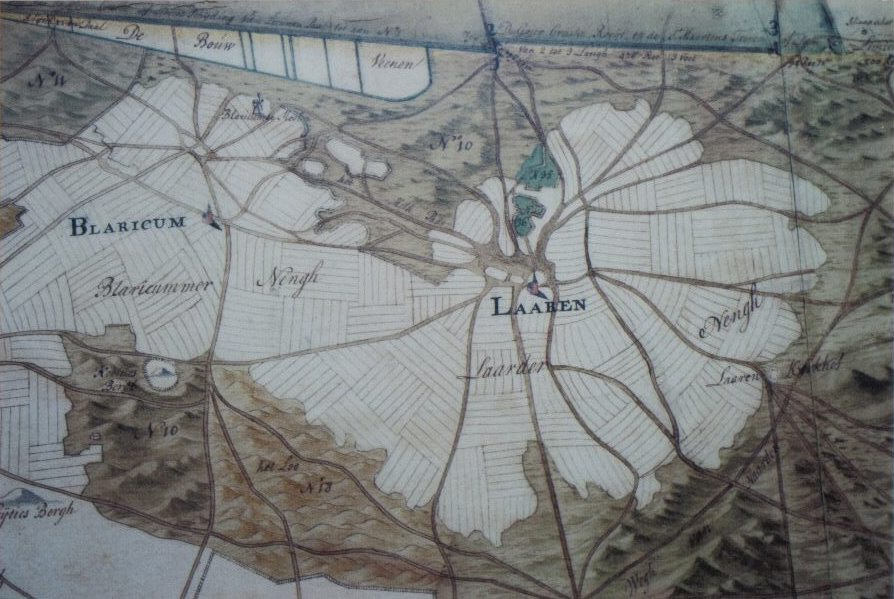Erfgooiers
Erfgooiers are descendants of people who lived and worked in the Gooi region many hundreds of years ago. Around 1300, the Count of Holland granted rights to his subjects on land belonging to him. Since then, the "Gooiers" have had the right to use common land.
1404
In 1403, Duke Albert of Bavaria, as Count of Holland, intervened to put an end to disputes over common land and established some rules.
This resulted in the first schaarbrief (letter of scission) on January 25, 1404; an agreement between the people of the Gooi region and the city of Naarden (a schaar is a piece of land of a certain size). A single common was created for the entire Gooi region, with no divisio between the city and villages.
Several more letters followed, clarifying the position of the Gooiers. Foreigners were excluded from the right of use. The erfgooiership was considered an inherited right, passed from father to son, and was tied to occupying a house in Naarden or one of the Gooi villages. The erfgooier was now a man born in Gooiland, and he was entitled to use the common land once he independently began farming in the Gooi region. In doing so, he was bound by rules set by the common board.
Several more letters followed, clarifying the position of the Gooiers. Foreigners were excluded from the right of use. The erfgooiership was considered an inherited right, passed from father to son, and was tied to occupying a house in Naarden or one of the Gooi villages. The erfgooier was now a man born in Gooiland, and he was entitled to use the common land once he independently began farming in the Gooi region. In doing so, he was bound by rules set by the common board.
1474
That year, a lawsuit concerning the rights of the erfgooiers arose because Charles the Bold claimed all rights to meadows, heaths, and forests. The Great Council of Mechelen confirmed the erfgooiers' rights.
1590
An organization called Stad en Land van Gooiland (City and Countryside of Gooiland) was established, which, on behalf of the erfgooiers, focuses on measures for the maintenance and use of commons and heaths. 1625
In that year, influential Amsterdammers requested a concession from the States of Holland to reclaim a piece of land on the west side of the Gooi region. This led to resistance from the erfgooiers (farmers of the Gooi region). An agreement was reached in 1634. The reclamation led to the creation of 's-Graveland.
1708
The States of Holland ordered the Gooiers to create a map of Gooiland, indicating the common lands and also to draw up a list of those entitled to them. This list contained 1,088 names of those entitled to them, 624 of whom were non-farmers, being erfgooiers without livestock.
The common lands then covered 5,732 hectares, approximately half of the Gooi region.
Detail of the 1723 map of Gooiland

1836, 1843
The government sought a regulation that would allow it to offer land for sale. This resulted in Royal Decrees in 1836 and 1843, in which the majority of the common land was ceded in exchange for full ownership of the remaining portion.
1890
Until the influx of city dwellers, which came with the opening of the Amsterdam railway, municipal governments were almost entirely composed of erfgooiers (owners of the erfgooiers). The Assembly of the City and Country therefore consisted exclusively of those entitled to the erfgooiers. As the number of city dwellers increased, so did their number on municipal governments. It was anticipated that the erfgooiers would be governed by a majority of non-erfgooiers. On April 4, 1900, a meeting of erfgooiers was convened in the Grote Kerk (Great Church) in Naarden to protest the composition of the council and the alienation of land.
1903
A resident of Blaricum, known as "Erfgooier," attempted to bring cattle onto the commons without paying the dues to the town councilor of the former town council. This led to an escalation of the situation. The mayor of Blaricum called in soldiers. Their brutal response resulted in one death. The situation surrounding the Erfgooiers thus gained national attention.
1912
The government decided to put an end to the difficulties by regulating the Erfgooiers issue by law. This resulted in a bill that was passed by the House of Representatives on March 14, 1912, and by the Senate on April 24. Under this bill, the "Vereniging Stad en Lande van Gooiland" (Association of City and Countryside of Gooiland), based in Naarden, was granted ownership of the common heaths and meadows, which at the time totaled approximately 3,260 hectares. The association's goal was to promote the prosperity of Erfgooiers in particular and that of Gooiland in general.
1913-1930
The association dedicated itself to improving the pasturelands. The Dutch Heathland Society was called upon for assistance. Flood defenses were improved, drainage ditches, and paved roads were constructed. The land was also divided into grazing blocks.
Much had been achieved for the grazing herders. No funds were set aside for those who did not graze; the income benefited them.
The "Power through Law" Association, founded in 1922, had been striving for years to dissolve Stad en Lande (City and Land) to realize payments to those who did not graze.
1930-1972
Nature conservationists feared that nature reserves would be sold for profit, including for new construction projects. The then chairman of the Association for the Preservation of Natural Monuments, Mr. P.G. Van Tienhoven, and the then Queen's Commissioner, Jhr. Mr. Dr. A. Roëll, took the initiative to secure the nature reserve from the Stad en Lande Association through purchase.
Through a partnership between the Province of North Holland, the municipality of Amsterdam, and the six Gooi municipalities: Naarden, Huizen, Bussum, Blaricum, Laren, and Hilversum, it was decided to establish a Gooisch Nature Reserve Foundation. The government and Parliament were willing to amend the Erfgooiers Act. This allowed the Stad en Lande Association to transfer part of its holdings in exchange for a lump-sum payment to all eligible Erfgooiers.
In 1933, the Gooisch Nature Reserve Foundation acquired 1,524 hectares of forest and heathland from the Stad en Lande Association for two million guilders, as well as an additional 104 hectares of forest from private individuals for one million guilders. The 2,973 Erfgooiers involved each received the considerable sum of 566.04 guilders for that time.
1972
The decision had been made. The dissolution of Stad en Land was chosen for several obvious reasons: farmers had already lost much arable land and were missing parts of the commons, and housing development would claim more than half of the commons. The minimum subsistence level for many small farmers was also crucial. Before dissolution could proceed, several amendments had to be made to the 1912 law. Almost all erfgooiers (farmers of the commons) agreed to the dissolution, especially those who were not part of the commons. In July 1971, both the erfgooiers and the non-erfgooiers gave their approval. In 1972, the membership list was frozen; after that, no more "true" erfgooiers could be added. A new division arose among the erfgooiers. About half of them opted for cash benefits, the so-called "wijkers," while the others could acquire parts of the commons for a relatively small sum, the "blijvers." 1977
In 1977, the Stad en Lande Foundation was established. Its goal was to preserve and manage valuable archival materials and keep the spirit of the Stad en Lande of Gooiland alive. This archive is now housed in the City Archives in Naarden.
